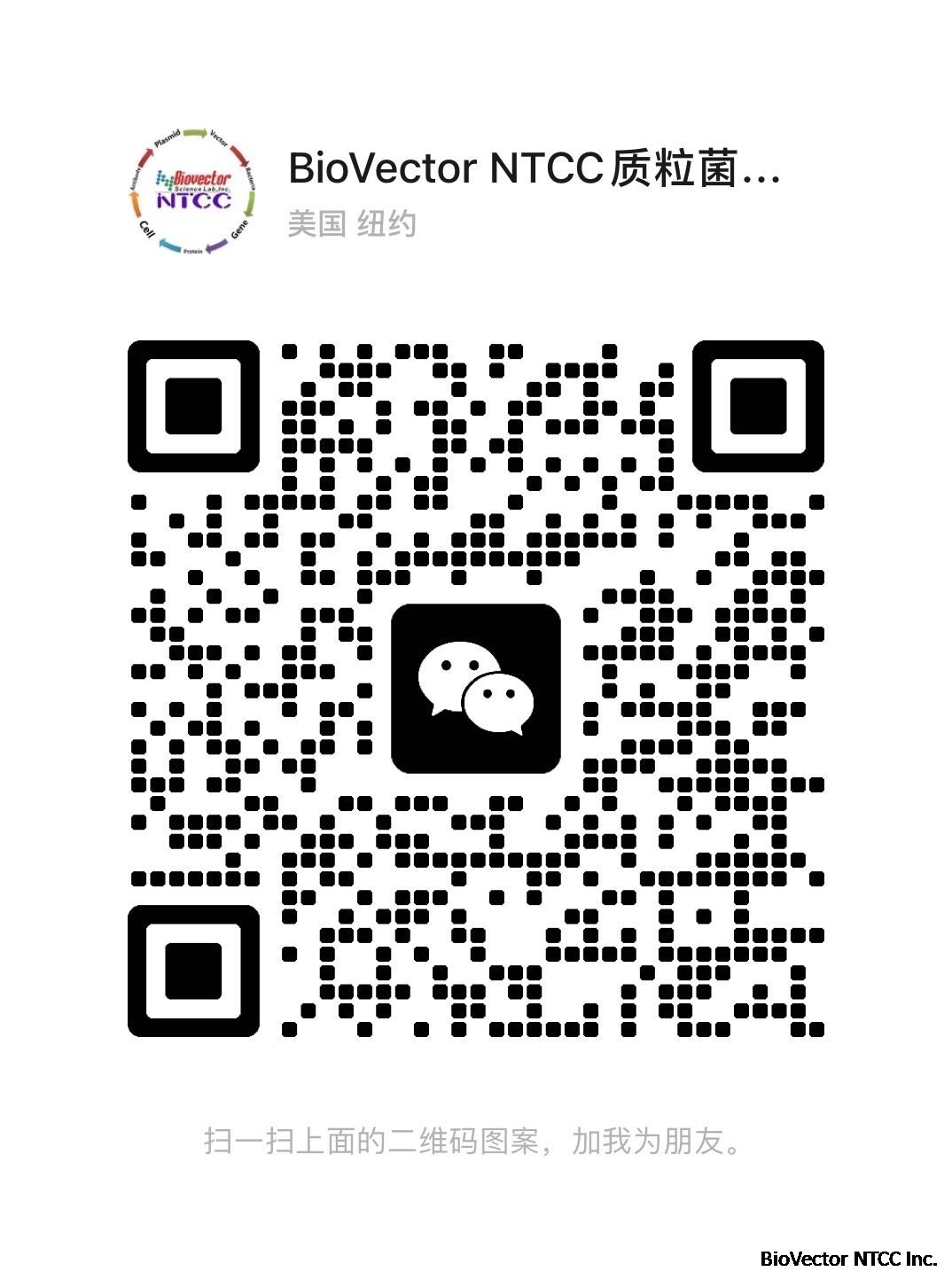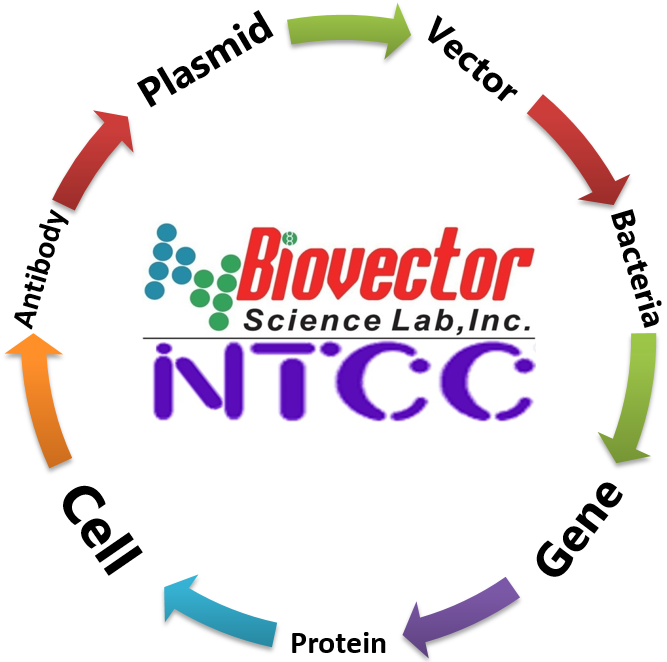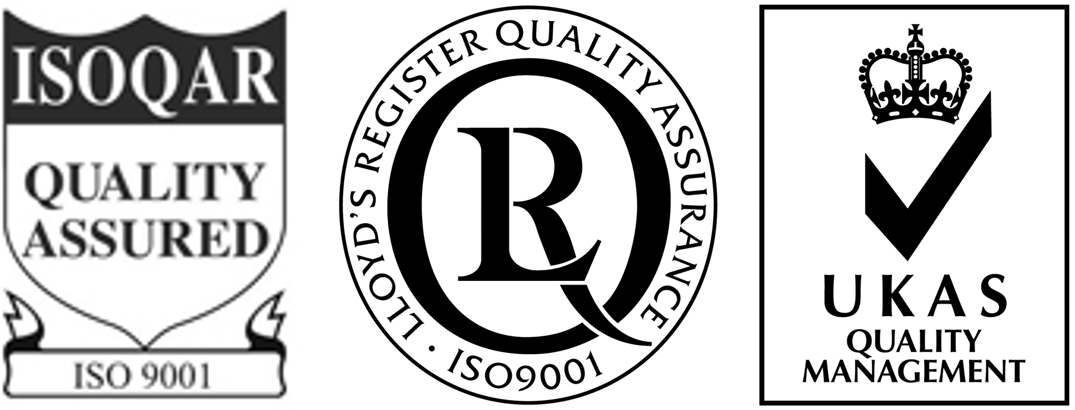EndoToxin-Free BL21(DE3) 无内毒素大肠杆菌表达宿主菌及感受态细胞-BioVector NTCC质粒载体菌种细胞基因保藏中心
- 价 格:¥29300
- 货 号:EndoToxin-Free BL21(DE3)
- 产 地:北京
- BioVector NTCC典型培养物保藏中心
- 联系人:Dr.Xu, Biovector NTCC Inc.
电话:400-800-2947 工作QQ:1843439339 (微信同号)
邮件:Biovector@163.com
手机:18901268599
地址:北京
- 已注册
EndoToxin-Free BL21(DE3) 无内毒素大肠杆菌表达宿主菌及感受态细胞
Description
EndoToxin-Free BL21(DE3) cells are the first commercially available competent cells with a modified LPS (Lipid IVA - see Fig. 1) that does not trigger the endotoxic response in human cells. EndoToxin-Free cells lack outer membrane agonists for hTLR4/MD-2 activation; therefore, activation of hTLR4/MD-2 signaling by EndoToxin-Free is several orders of magnitude lower as compared with E. coli wild-type cells. Heterologous proteins prepared from EndoToxin-Free are virtually free of endotoxic activity. After minimal purification from EndoToxin-Free cells, proteins or plasmids (which may contain Lipid IVA) can be used in most applications without eliciting an endotoxic response in human cells.In EndoToxin-Free cells, two of the secondary acyl chains of the normally hexa-acylated LPS have been deleted, eliminating a key determinant of endotoxicity in eukaryotic cells. The six acyl chains of the LPS are the trigger which is recognized by the Toll-like receptor 4 (TLR4) in complex with myeloid differentiation factor 2 (MD-2), causing activation of NF-ƙB and production of proinflammatory cytokines. The deletion of the two secondary acyl chains results in lipid IVA, which does not induce formation of the activated heterotetrameric TLR4/MD-2 complex and thus does not trigger the endotoxic response. In addition, the oligosaccharide chain is deleted, making it easier to remove the resulting lipid IVA from any downstream product.EndoToxin-Free competent cells have a genetically modified lipopolysaccharide (LPS) that disables the trigger for endotoxic response in mammalian cells. This was accomplished by incorporating seven genetic deletions that modify LPS to Lipid IVA, while one additional compensating mutation (msbA148) enables the cells to maintain viability in the presence of the LPS precursor lipid IVA. EndoToxin-Free BL21(DE3) cells are BL21(DE3) derived cells with several key mutations which result in significantly reduced endotoxicity. The specific set of mutations made to EndoToxin-Free cells is as follows:msbA148 gutQ kdsD lpxL lpxM pagP lpxP eptAGrowth/Colony Characteristics of EndoToxin-Free BL21(DE3) Cells:EndoToxin-Free BL21(DE3) cells grow at approximately 50% of the rate of normal BL21(DE3) cells. Users should expect to see very small colonies for the first 24 hours after plating transformants. BioVector NTCC Inc. recommends incubating plates for 32-40 hours before picking colonies for future experiments (see Transformation Protocol and Sample Induction Protocol sections of this manual for more information). Longer growth times are necessary to reach desired cell densities prior to inducing protein expression.In addition, users may observe some variation in colony size when plating EndoToxin-Free cells. A small portion (<2%)>250° for 1 hour prior to use • Do not use purification columns or resins that have come in contact with E. coli • Use reagents certified as low endotoxin or test reagents prior to use • Use a water source that is regularly tested for endotoxin contamination • Clean all laboratory surfaces with disinfectants Genotype Information EndoToxin-Free BL21(DE3) F– ompT hsdSB (rB- mB-) gal dcm lon λ(DE3 [lacI lacUV5-T7 gene 1 ind1 sam7 nin5]) msbA148 gutQ kdsD lpxL lpxM pagP lpxP eptAProtein Induction Protocol 1. Inoculate a single colony from a freshly streaked plate into 40 ml of LB-Miller medium containing the appropriate antibiotic for the plasmid and host strain. To minimize the amount of expression of the target protein prior to induction, add glucose to the growth medium at a concentration of 0.5% (w/v). 2. Incubate with shaking at 37°C overnight. 3. Inoculate 1L of LB-Miller medium (no glucose) containing the appropriate antibiotic with all 40 ml of the overnight culture prepared in step 2. Alternatively, measure the OD600 of your overnight culture and inoculate to a final OD600 of 0.1. 4. Incubate with shaking at 37°C until the OD600 reaches 0.6 - 0.8 (approximately 4-5 hours). 5. Add IPTG to a final concentration of 0.4 – 1 mM. (Prepare a 1 M solution of IPTG by dissolving 2.38 g of IPTG in water and adjust the final volume to 10 ml. Filter sterilize before use). To determine the optimal concentration of IPTG for maximum expression of the target protein, test a range of IPTG concentrations. 6. Incubate, shaking at 37°C for 3-4 hours. To determine the optimal time for induction of the target protein, it is recommended that a time course experiment be performed varying the induction from 2-16 hours. Note: Final OD600 of the EndoToxin-Free cells may be as low as 50% of that normally achieved with standard BL21(DE3) cells due to slower growth rates. 7. Place the culture on ice for 10 minutes. Harvest cells by centrifugation at 5,000 x g for 10 minutes at 4°C. 8. Remove the supernatant . Depending on your workflow and specific protein, you can proceed to: a. Store the pellet at -20°C. b. Store the pellet at -80°C. c. Immediately continue with processing (isolation and purification of protein). Media Recipes LB-Miller Culture Medium for Growth of Transformants Per liter: 5 g yeast extract 10 g tryptone 10 g NaCl Add all components to deionized water. Autoclave and cool to 55°C. LB-Miller Plates Per liter: 5 g yeast extract 10 g tryptone 10 g NaCl 15 g agar Add deionized water to 1 liter. Autoclave and cool to 55°C before adding the appropriate filter-sterilized antibiotic (e.g. ≤ 30 mg/L kanamycin; ≤ 100 mg/L ampicillin or carbenicillin; ≤ 30 mg/L chloramphenicol). Pour approximately 25 mL per Petri plate.
- 公告/新闻




